In August 2018, NASA’s Parker Solar Probe launched to space, soon becoming the closest-ever spacecraft to the Sun. With cutting-edge scientific instruments to measure the environment around the spacecraft, Parker Solar Probe has completed three of 24 planned passes through never-before-explored parts of the Sun’s atmosphere, the corona. On December 4, 2019, four new papers in the journal Nature describe what scientists have learned from this unprecedented exploration of our star — and what they look forward to learning next.
These findings reveal new information about the behavior of the material and particles that speed away from the Sun, bringing scientists closer to answering fundamental questions about the physics of our star. In the quest to protect astronauts and technology in space, the information Parker has uncovered about how the Sun constantly ejects material and energy will help scientists re-write the models we use to understand and predict the space weather around our planet and understand the process by which stars are created and evolve.
“This first data from Parker reveals our star, the Sun, in new and surprising ways,” said Thomas Zurbuchen, associate administrator for science at NASA Headquarters in Washington. “Observing the Sun up close rather than from a much greater distance is giving us an unprecedented view into important solar phenomena and how they affect us on Earth, and gives us new insights relevant to the understanding of active stars across galaxies. It’s just the beginning of an incredibly exciting time for heliophysics with Parker at the vanguard of new discoveries.”
Though it may seem placid to us here on Earth, the Sun is anything but quiet. Our star is magnetically active, unleashing powerful bursts of light, deluges of particles moving near the speed of light, and billion-ton clouds of magnetized material. All this activity affects our planet, injecting damaging particles into the space where our satellites and astronauts fly, disrupting communications and navigation signals, and even — when intense — triggering power outages. It’s been happening for the Sun’s entire 5-billion-year lifetime, and will continue to shape the destinies of Earth and the other planets in our solar system into the future.
NASA’s Parker Solar Probe mission has returned unprecedented data from near the Sun, culminating in new discoveries published on December 4, 2019, in the journal Nature. Among the findings are new understandings of how the Sun’s constant outflow of material, the solar wind, behaves. Seen near Earth — where it can interact with our planet’s natural magnetic field and cause space weather effects that interfere with technology — the solar wind appears to be a relatively uniform flow of plasma. But Parker Solar Probe’s observations reveal a complicated, active system not seen from Earth. Credit: NASA’s Goddard Space Flight Center
“The Sun has fascinated humanity for our entire existence,” said Nour E. Raouafi, project scientist for Parker Solar Probe at the Johns Hopkins Applied Physics Laboratory in Laurel, Maryland, which built and manages the mission for NASA. “We’ve learned a great deal about our star in the past several decades, but we really needed a mission like Parker Solar Probe to go into the Sun’s atmosphere. It’s only there that we can really learn the details of these complex solar processes. And what we’ve learned in just these three solar orbits alone has changed a lot of what we know about the Sun.”
What happens on the Sun is critical to understanding how it shapes the space around us. Most of the material that escapes the Sun is part of the solar wind, a continual outflow of solar material that bathes the entire solar system. This ionized gas, called plasma, carries with it the Sun’s magnetic field, stretching it out through the solar system in a giant bubble that spans more than 10 billion miles.
The dynamic solar wind
Observed near Earth, the solar wind is a relatively uniform flow of plasma, with occasional turbulent tumbles. But by that point it’s traveled over ninety million miles (145 million kilometers) — and the signatures of the Sun’s exact mechanisms for heating and accelerating the solar wind are wiped out. Closer to the solar wind’s source, Parker Solar Probe saw a much different picture: a complicated, active system.
“The complexity was mind-blowing when we first started looking at the data,” said Stuart Bale, the University of California, Berkeley, lead for Parker Solar Probe’s FIELDS instrument suite, which studies the scale and shape of electric and magnetic fields. “Now, I’ve gotten used to it. But when I show colleagues for the first time, they’re just blown away.” From Parker’s vantage point of 15 million miles (24 million kilometers) from the Sun, Bale explained, the solar wind is much more impulsive and unstable than what we see near Earth.
Like the Sun itself, the solar wind is made up of plasma, where negatively charged electrons have separated from positively charged ions, creating a sea of free-floating particles with individual electric charge. These free-floating particles mean plasma carries electric and magnetic fields, and changes in the plasma often make marks on those fields. The FIELDS instruments surveyed the state of the solar wind by measuring and carefully analyzing how the electric and magnetic fields around the spacecraft changed over time, along with measuring waves in the nearby plasma.
These measurements showed quick reversals in the magnetic field and sudden, faster-moving jets of material — all characteristics that make the solar wind more turbulent. These details are key to understanding how the wind disperses energy as it flows away from the Sun and throughout the solar system.
One type of event in particular drew the eye of the science teams: flips in the direction of the magnetic field, which flows out from the Sun, embedded in the solar wind. These reversals — dubbed “switchbacks” — last anywhere from a few seconds to several minutes as they flow over Parker Solar Probe. During a switchback, the magnetic field whips back on itself until it is pointed almost directly back at the Sun. Together, FIELDS and SWEAP, the solar wind instrument suite led by the University of Michigan and managed by the Smithsonian Astrophysical Observatory, measured clusters of switchbacks throughout Parker Solar Probe’s first two flybys.
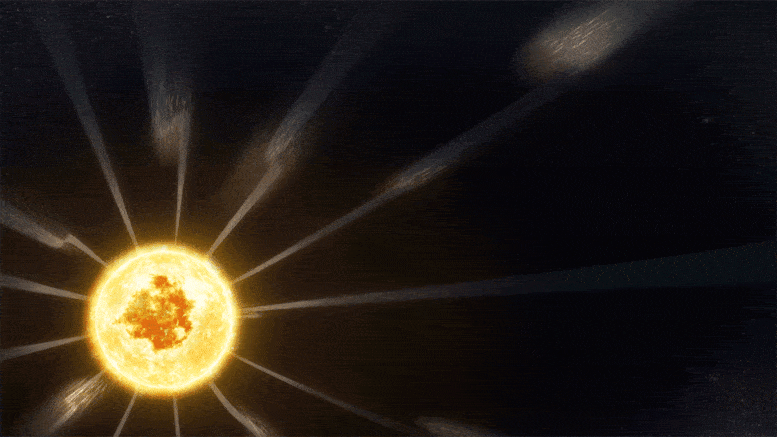
Parker Solar Probe observed switchbacks — traveling disturbances in the solar wind that caused the magnetic field to bend back on itself — an as-yet unexplained phenomenon that might help scientists uncover more information about how the solar wind is accelerated from the Sun. Credit: NASA’s Goddard Space Flight Center/Conceptual Image Lab/Adriana Manrique Gutierrez
“Waves have been seen in the solar wind from the start of the space age, and we assumed that closer to the Sun the waves would get stronger, but we were not expecting to see them organize into these coherent structured velocity spikes,” said Justin Kasper, principal investigator for SWEAP — short for Solar Wind Electrons Alphas and Protons — at the University of Michigan in Ann Arbor. “We are detecting remnants of structures from the Sun being hurled into space and violently changing the organization of the flows and magnetic field. This will dramatically change our theories for how the corona and solar wind are being heated.”
The exact source of the switchbacks isn’t yet understood, but Parker Solar Probe’s measurements have allowed scientists to narrow down the possibilities.
Among the many particles that perpetually stream from the Sun are a constant beam of fast-moving electrons, which ride along the Sun’s magnetic field lines out into the solar system. These electrons always flow strictly along the shape of the field lines moving out from the Sun, regardless of whether the north pole of the magnetic field in that particular region is pointing toward or away from the Sun. But Parker Solar Probe measured this flow of electrons going in the opposite direction, flipping back towards the Sun — showing that the magnetic field itself must be bending back towards the Sun, rather than Parker Solar Probe merely encountering a different magnetic field line from the Sun that points in the opposite direction. This suggests that the switchbacks are kinks in the magnetic field — localized disturbances traveling away from the Sun, rather than a change in the magnetic field as it emerges from the Sun.
Parker Solar Probe’s observations of the switchbacks suggest that these events will grow even more common as the spacecraft gets closer to the Sun. The mission’s next solar encounter on Jan. 29, 2020, will carry the spacecraft nearer to the Sun than ever before, and may shed new light on this process. Not only does such information help change our understanding of what causes the solar wind and space weather around us, it also helps us understand a fundamental process of how stars work and how they release energy into their environment.
The rotating solar wind
Some of Parker Solar Probe’s measurements are bringing scientists closer to answers to decades-old questions. One such question is about how, exactly, the solar wind flows out from the Sun.
Near Earth, we see the solar wind flowing almost radially — meaning it’s streaming directly from the Sun, straight out in all directions. But the Sun rotates as it releases the solar wind; before it breaks free, the solar wind was spinning along with it. This is a bit like children riding on a playground park carousel – the atmosphere rotates with the Sun much like the outer part of the carousel rotates, but the farther you go from the center, the faster you are moving in space. A child on the edge might jump off and would, at that point, move in a straight line outward, rather than continue rotating. In a similar way, there’s some point between the Sun and Earth, the solar wind transitions from rotating along with the Sun to flowing directly outwards, or radially, like we see from Earth.
Exactly where the solar wind transitions from a rotational flow to a perfectly radial flow has implications for how the Sun sheds energy. Finding that point may help us better understand the lifecycle of other stars or the formation of protoplanetary disks, the dense disks of gas and dust around young stars that eventually coalesce into planets.
Now, for the first time — rather than just seeing that straight flow that we see near Earth — Parker Solar Probe was able to observe the solar wind while it was still rotating. It’s as if Parker Solar Probe got a view of the whirling carousel directly for the first time, not just the children jumping off it. Parker Solar Probe’s solar wind instrument detected rotation starting more than 20 million miles (32 million kilometers) from the Sun, and as Parker approached its perihelion point, the speed of the rotation increased. The strength of the circulation was stronger than many scientists had predicted, but it also transitioned more quickly than predicted to an outward flow, which is what helps mask these effects from where we usually sit, about 93 million miles (150 million kilometers) from the Sun.
“The large rotational flow of the solar wind seen during the first encounters has been a real surprise,” said Kasper. “While we hoped to eventually see rotational motion closer to the Sun, the high speeds we are seeing in these first encounters is nearly ten times larger than predicted by the standard models.”
Dust near the Sun
Another question approaching an answer is the elusive dust-free zone. Our solar system is awash in dust — the cosmic crumbs of collisions that formed planets, asteroids, comets, and other celestial bodies billions of years ago. Scientists have long suspected that, close to the Sun, this dust would be heated to high temperatures by powerful sunlight, turning it into a gas and creating a dust-free region around the Sun. But no one had ever observed it.
For the first time, Parker Solar Probe’s imagers saw the cosmic dust begin to thin out. Because WISPR — Parker Solar Probe’s imaging instrument, led by the Naval Research Lab — looks out the side of the spacecraft, it can see wide swaths of the corona and solar wind, including regions closer to the Sun. These images show dust starting to thin a little over 7 million miles from the Sun, and this decrease in dust continues steadily to the current limits of WISPR’s measurements at a little over 4 million miles from the Sun.
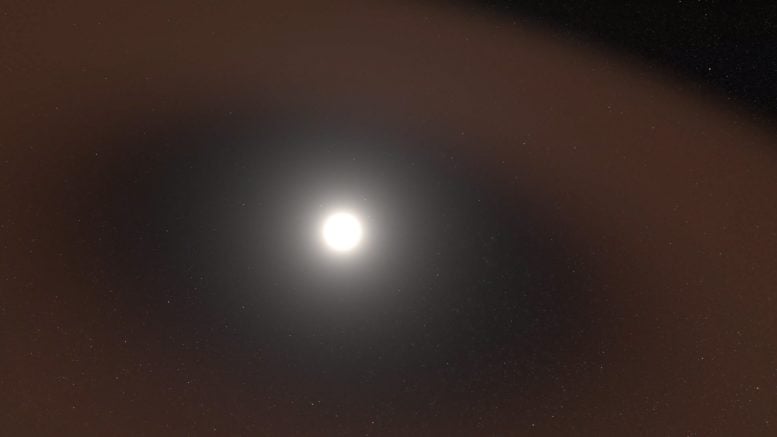
Parker Solar Probe saw cosmic dust (illustrated here) — scattered throughout our solar system — begin to thin out close to the Sun, supporting the idea of a long-theorized dust-free zone near the Sun. Credit: NASA’s Goddard Space Flight Center/Scott Wiessinger
“This dust-free zone was predicted decades ago, but has never been seen before,” said Russ Howard, principal investigator for the WISPR suite — short for Wide-field Imager for Solar Probe — at the Naval Research Laboratory in Washington, D.C. “We are now seeing what’s happening to the dust near the Sun.”
At the rate of thinning, scientists expect to see a truly dust-free zone starting a little more than 2-3 million miles (3-5 million kilometers) from the Sun — meaning Parker Solar Probe could observe the dust-free zone as early as 2020, when its sixth flyby of the Sun will carry it closer to our star than ever before.
Putting space weather under a microscope
Parker Solar Probe’s measurements have given us a new perspective on two types of space weather events: energetic particle storms and coronal mass ejections.
Tiny particles — both electrons and ions — are accelerated by solar activity, creating storms of energetic particles. Events on the Sun can send these particles rocketing out into the solar system at nearly the speed of light, meaning they reach Earth in under half an hour and can impact other worlds on similarly short time scales. These particles carry a lot of energy, so they can damage spacecraft electronics and even endanger astronauts, especially those in deep space, outside the protection of Earth’s magnetic field — and the short warning time for such particles makes them difficult to avoid.
Understanding exactly how these particles are accelerated to such high speeds is crucial. But even though they zip to Earth in as little as a few minutes, that’s still enough time for the particles to lose the signatures of the processes that accelerated them in the first place. By whipping around the Sun at just a few million miles away, Parker Solar Probe can measure these particles just after they’ve left the Sun, shedding new light on how they are released.
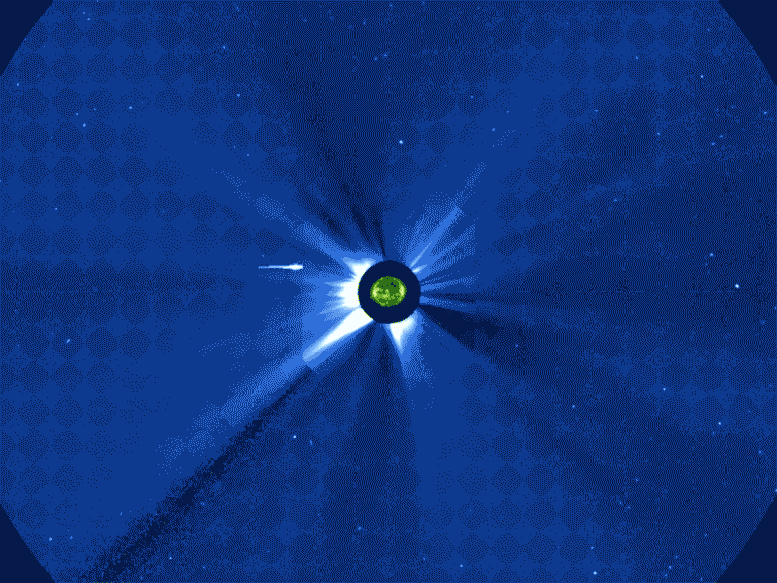
Parker Solar Probe has made new observations of energetic particles — like those seen here impacting a detector on ESA and NASA’s Solar and Heliospheric Observatory — which will help scientists better understand how these events are accelerated. Credit: ESA/NASA/SOHO
Already, Parker Solar Probe’s ISʘIS instruments, led by Princeton University, have measured several never-before-seen energetic particle events — events so small that all trace of them is lost before they reach Earth or any of our near-Earth satellites. These instruments have also measured a rare type of particle burst with a particularly high number of heavier elements — suggesting that both types of events may be more common than scientists previously thought.
“It’s amazing – even at solar minimum conditions, the Sun produces many more tiny energetic particle events than we ever thought,” said David McComas, principal investigator for the Integrated Science Investigation of the Sun suite, or ISʘIS, at Princeton University in New Jersey. “These measurements will help us unravel the sources, acceleration, and transport of solar energetic particles and ultimately better protect satellites and astronauts in the future.”
Data from the WISPR instruments also provided unprecedented detail on structures in the corona and solar wind — including coronal mass ejections, billion-ton clouds of solar material that the Sun sends hurtling out into the solar system. CMEs can trigger a range of effects on Earth and other worlds, from sparking auroras to inducing electric currents that can damage power grids and pipelines. WISPR’s unique perspective, looking alongside such events as they travel away from the Sun, has already shed new light on the range of events our star can unleash.
Parker Solar Probe’s imagers look out sideways from behind the spacecraft’s heat shield, watching structures as they develop in the corona. Credit: NASA/JHUAPL/Naval Research Lab/Parker Solar Probe
“Since Parker Solar Probe was matching the Sun’s rotation, we could watch the outflow of material for days and see the evolution of structures,” said Howard. “Observations near Earth have made us think that fine structures in the corona segue into a smooth flow, and we’re finding out that’s not true. This will help us do better modeling of how events travel between the Sun and Earth.”
As Parker Solar Probe continues on its journey, it will make 21 more close approaches to the Sun at progressively closer distances, culminating in three orbits a mere 3.83 million miles (6.16 million kilometers) from the solar surface.
“The Sun is the only star we can examine this closely,” said Nicola Fox, director of the Heliophysics Division at NASA Headquarters. “Getting data at the source is already revolutionizing our understanding of our own star and stars across the universe. Our little spacecraft is soldiering through brutal conditions to send home startling and exciting revelations.”
Parker Solar Probe is part of NASA’s Living with a Star program to explore aspects of the Sun-Earth system that directly affect life and society. The Living with a Star program is managed by the agency’s Goddard Space Flight Center in Greenbelt, Maryland, for NASA’s Science Mission Directorate in Washington. Johns Hopkins APL designed, built and operates the spacecraft.

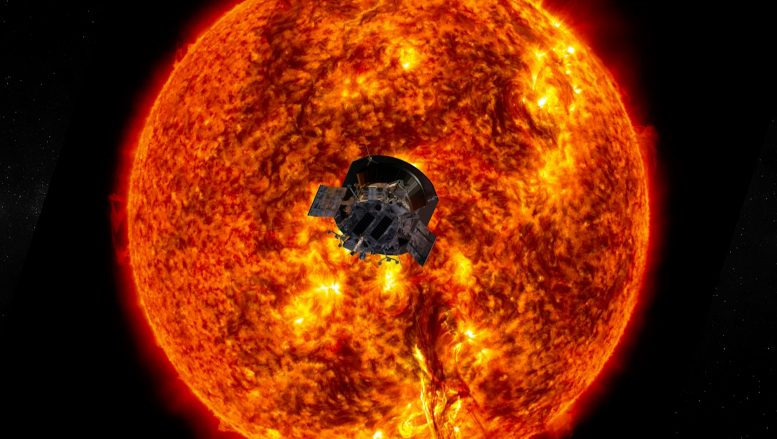


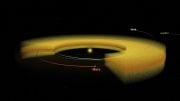

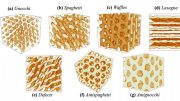
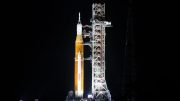
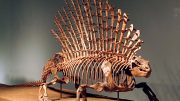
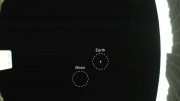
These phenomena are predicted by Plasma Cosmology – nothing unexpected. Check out the website Plasma Pics for a thorough presentation and evidence.
Also
https://www.thunderbolts.info/wp/2019/12/14/donald-scott-parker-solar-probe-and-the-electric-sun-space-news/
https://www.thunderbolts.info/wp/2019/12/21/donald-scott-birkeland-currents-and-the-parker-solar-probe-space-news/
Also https://www.youtube.com/watch?v=SZrGecDJbL8
Can you please explain how do you send data in such harsh condition near the sun. In article about Earths magnetic field you said that satelits work hard in west pacific because of weak magnetic field and strong radiation of Sun in that place. So how do you operate in such near postion from Sun ? Thanks
Please take a few minutes to read this all the way through it’s of great importance. My name is Michelle and I want to share with you what’s been revealed to me. First you know God sees what we all do because he’s all seeing and all knowing. Well the reason I’m sharing this is because I’m praying that people will open thier eyes to see the truth. If we don’t use our voice to stand up for what’s good and right what good is having a voice so that’s why I’m using my voice to stand up for God. The Bible has gone world wide and unless more people stand up to get the word out the greater the chances are that people will look at it as if war is ok or thier going to end up thinking it’s contradicting or sacrificing children is or having more than one wife and they won’t believe the truth about God because the Bible is full of the lusts and desires of the devil. I mean there is good in the Bible to but allot of it is evil and evil was not found in God. So I’m asking you to join with me to help get the true truth out for our heavenly father because he’s worthy and we can bring him true honor, praise, and glory by speaking up for him. Now I’m going to prove the devil got in the Bible with the titles of God, Lord God, and angels. First go to James 1:13 let no man say when he’s tempted say I am tempted of God for God cannot be tempted with evil neither does he tempth no man. Now knowing this keep it in mind go to Genesis 22:1 and it came to pass after these things that God did tempt Abraham now stop here for a sec since God tempts noone this started off with a lie so this lie is of the devil it was him claiming to be God when he came with a voice to Abraham. Now in 22:2 and he said referring to the title God said take now thy son, thy only son Isaac so stop here that was a lie because Abraham had Ishmael first so God wouldn’t have said this either to show you go to Genesis 17:15-16 you are too call her Sarah and I will bless her and give thee a son of her also. So see it again was the devil saying your only son trying to get Abraham to kill his son of promise then it says offer him up as a burnt offering upon a mountain which is a high place and in Jeremiah 19:5 it says they built thier high places and burn thier children to Baal which is another name for the devil. So this speaking to Abraham was not God but the devil claiming to be God like he’s done since he rebelled against God and if there’s one lie in the Bible on the one and only true God then there’s more and there is. So please separate God from the devil so that the devil isn’t being called God because he has been and noones even noticed it and like it says in 2 Corinthians 4:4 the God of this age(so here is referring to another God) had blinded the minds of unbelievers(but it’s believer’s in one God that’s minds has been blinded) so that they cannot see the light of the gospel that displays the glory of Christ who is the image of God. So what’s the glory of Christ its that he came to love and heal and raise the dead he even laid down his life because he loves us and by doing so he showed war and fighting is not the way and he only ask that we repent, turn from evil. But when we teach that God told Moses, Elijah, Samson, Abraham or anyone to murder we call him the liar because he said thou shalt not murder so by saying this we call him the murderer also and he wouldn’t come and deliver people into people’s hand’s to kill them that’s always been the devil getting us to kill off each other by turning us against each other, but God plays no part in it. Jesus is the one that said your father is the devil the lusts and desires of the devil you will do he was a murderer and liar from the beginning and the truth abode not in him he said he’s the father of lies but Jesus is the truth the way and life. No evil was found in him so everything evil is of the devil claiming to be God, Lord God or a angel of God he even uses Jesus name in a bad way by saying he called the woman who asked him to heal her demon possessed daughter a dog which he didn’t I mean he stopped them from calling Mary Magdalene a bad name and stoning her. So please help in the good fight help tell the true truth about God. Another thing being in his presence is pure peace and love there’s no feelings of hate. I know this because when I was 14 years old I went to heaven and I can witness to something’s that’s in revelation like in 22:1 and he showed me a pure river of water of life clear as crystal proceeding out of the throne of God and the lamb. Well I saw the river but it’s coming from around the temple where inside was his throne and it’s huge and made out of pure gold with a cross in the back of it and in the four corners it’s dark purple and his throne sit on a glass spindle that could turn and face you or keep the back to you and in revelation 21:21 it says the street of the city was pure gold as it were transparent glass well the gates are pure gold and the street is transparent glass and the mansions are different colors the first was pink the second was blue and the third was a burgundy color and this is what I saw in heaven plus God’s only begotten son was under the tree that was across the river with some little children and the fruit was red when I was there and it tells about the tree and where it is in revelation 22:2 on either side of the river was the tree of life which bare 12 manner of fruit. So I can testify to these things and that God is light because a bright light appeared on the throne and God spoke to me from the throne which is his mercy seat but he never turned to face me. Now it’s written that the truth would be evil spoken against in the last times and the truth is Jesus and if you’ll look in Luke 2:34-35 this child is destined to cause the falling and rising of many in Israel (but the Bibles gone world wide) to be a sign that will be evil spoken against so that the thoughts of many hearts will be revealed. So here if one part of the Bible is telling lies on God he is being evil spoken of and the keyword is evil and it’s evil that’s behind it because there was no evil found in Jesus and who hates him it’s the devil but the Bible portrays him both ways good and evil and allot of people would say well those people was killing the evil people for God but we all belong to Christ and when they became what they was killing, which was better? Neither, again God said thou shalt not murder and it’s written no murderer has eternal life residing in him. And God was Jesus in the flesh and that is his holy name. Look in 1st Peter 4:8 it tells what covers a multitude of sin its love not hate, hate brings about the lusts and desires of the devil and love brings about the desires of God and they are not one in the same God will not change to become the devil because if we are calling him the devil plus God where’s the hope in that because a liar will always lie to you and murderer will kill you. God is one and the devil is one and in Philippines 4:8 it tells us what things to think about whatever is true whatever is noble whatever is right whatever is pure whatever is lovely whatever is admirable if anything is excellent or praiseworthy think about these things. So murder and war are none of these things and it’s time to wake up to come off the milk because in Hebrews 5:13-14 anyone who lives on milk being still an infant is not acquainted with the teaching about righteousness, but solid food is for the mature who by constant use have trained themselves to distinguish good from evil and this is why I’m asking people to use discernment for the whole Bible. I’m trying to reveal some of what’s been revealed to me and I think it’s really sad that God does all good things and he came and did all good things and he laid down his life to show us love was the way not hate not fighting but love and he’s being accused of being a liar and murderer beside if he delivered people into others hands to be killed he might have as well did it himself and he said thou shalt not murder to tell others to would make him a liar. I can’t imagine how he must feel can you imagine? Please discern the Bible and stand up for God and I mean because of religion back then he had to be killed to save people from sin but I know I wouldn’t have been in on that I wouldn’t have been one of the ones screaming to crucify him because he was already going around healing and forgiving sins before they killed him. So because of religion back then if you had been there what would you have screamed thinking it was the only way? To crucify him or would you have been one of the ones crying for him. share with others thank you. Your sister in Christ Michelle.
One last thing God spoke everything into existence on his own and he can speak everything out he never needed us to kill off each other the devil does but God doesn’t and it says they are ignorant of this that God spoke and created and they will think their killing you for God so see it was never God saying to kill